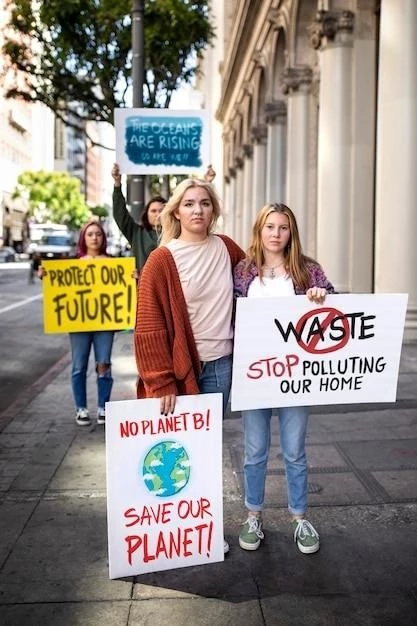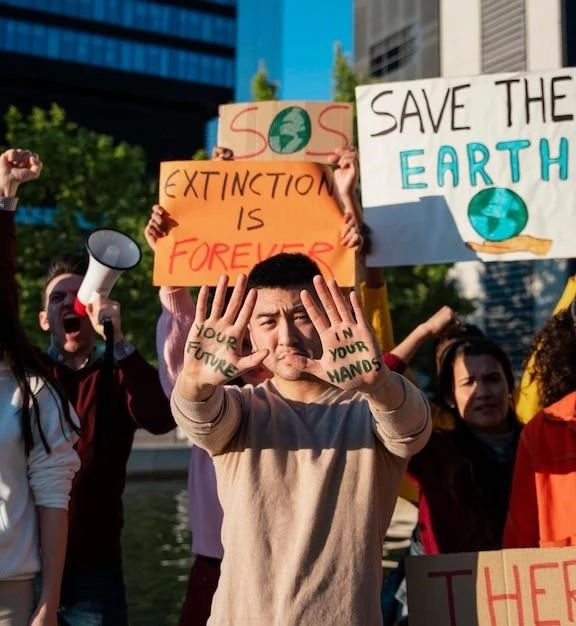The Paris Agreement‚ adopted by 196 parties at the 21st Conference of the Parties of the United Nations Framework Convention on Climate Change (UNFCCC) in Paris on 12 December 2015‚ is a landmark international agreement that aims to combat climate change by limiting global warming to well below 2 degrees Celsius‚ preferably to 1.5 degrees Celsius‚ compared to pre-industrial levels. It entered into force on 4 November 2016.
Key Provisions of the Paris Agreement
The Paris Agreement is a legally binding international treaty that outlines a global framework for addressing climate change. Its key provisions include:
- Nationally Determined Contributions (NDCs): Each country submits its own NDC‚ outlining its climate action targets‚ including emissions reduction goals and adaptation plans. These NDCs are reviewed every five years to increase ambition over time.
- Global Stocktake: Every five years‚ countries will assess collective progress towards achieving the agreement’s goals through a process known as the global stocktake. This review will inform future actions and enhance ambition.
- Transparency Framework: The agreement establishes a robust transparency framework to ensure accountability and track progress. Countries are required to report their emissions and actions transparently.
- Climate Finance: Developed countries committed to providing financial support to developing countries to help them mitigate and adapt to climate change. This includes a goal of mobilizing $100 billion per year by 2020.
- Adaptation: The agreement recognizes the importance of adaptation measures to cope with the impacts of climate change. It encourages countries to develop and implement adaptation plans.

Significance of the Paris Agreement
The Paris Agreement is considered a significant milestone in international climate action for several reasons:
- Universal Participation: It represents the first time that nearly all countries have committed to taking action on climate change.
- Long-Term Goals: The agreement establishes ambitious long-term goals‚ aiming to keep global warming well below 2 degrees Celsius and preferably to 1.5 degrees Celsius.
- Flexibility and Adaptation: It allows countries to set their own NDCs‚ recognizing the different capabilities and priorities of nations.
- Transparency and Accountability: The agreement includes a robust transparency framework to ensure accountability and track progress.
- Global Collaboration: It fosters global collaboration and cooperation to address climate change‚ promoting technological innovation and knowledge sharing.

Challenges and Opportunities
While the Paris Agreement represents a significant step forward‚ challenges remain in its implementation. These include:
- Ambition Gap: Current NDCs are not sufficient to limit global warming to the agreed-upon targets‚ requiring increased ambition in future commitments.
- Financial Support: Meeting the financial commitments to developing countries remains a challenge‚ requiring sustained and increased investment.
- Implementation and Enforcement: Ensuring effective implementation and enforcement of the agreement requires continued political will and cooperation.
- Technological Innovation: Accelerating technological innovation is crucial to develop and deploy low-carbon technologies and solutions.
Despite the challenges‚ the Paris Agreement presents significant opportunities to build a more sustainable future. It provides a framework for global collaboration‚ promotes innovation‚ and incentivizes investment in clean energy and climate-resilient infrastructure. By working together‚ countries can achieve the goals of the agreement and limit the worst impacts of climate change.
Conclusion
The Paris Agreement is a landmark international agreement that provides a framework for global action to combat climate change. It is a testament to the growing recognition of the urgency of climate action and the potential for international cooperation. By working together‚ countries can achieve the goals of the agreement and secure a sustainable future for all.










